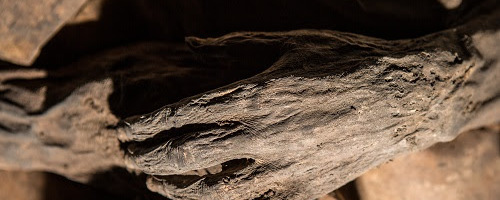
A mummy found in the same Lithuanian crypt where researchers extracted DNA from a small child, thought to have died of smallpox. (Image by Kiril achovskij)
Prevalent theories place the origin of the deadly smallpox virus in ancient Egypt, India and China. But a recent analysis of smallpox DNA from a 17th-century mummy tells a different story. Researchers compared the strain with its modern variants, dating up to 1970s, and discovered evidence that the evolution of the modern form of virus occurred no later than 16th century. Authors of the study also found that the immunization efforts of late 18th century helped smallpox virus evolve into two circulating strains, one of which was highly virulent and deadly. These findings advance our understanding of viral lethal infections like the smallpox, their origin and evolution.
Authors:
Ana T. Duggan, Maria F. Perdomo, Dario Piombino-Mascali, Stephanie Marciniak, Debi Poinar, Matthew V. Emery, Jan P. Buchmann, Sebastian Duchêne, Rimantas Jankauskas, Margaret Humphreys, G. Brian Golding, John Southon, Alison Devault, Jean-Marie Rouillard, Jason W. Sahl, Olivier Dutour, Klaus Hedman, Antti Sajantila, Geoffrey L. Smith, Edward C. Holmes, Hendrik N. Poinar
Corresponding Canadian author:
Hendrik Poinar, Director, McMaster Ancient DNA Centre,Tel: 905-525-9140 ext. 26331, Email: poinarh@mcmaster.ca
Original paper published in Current Biology on December 8, 2016.



